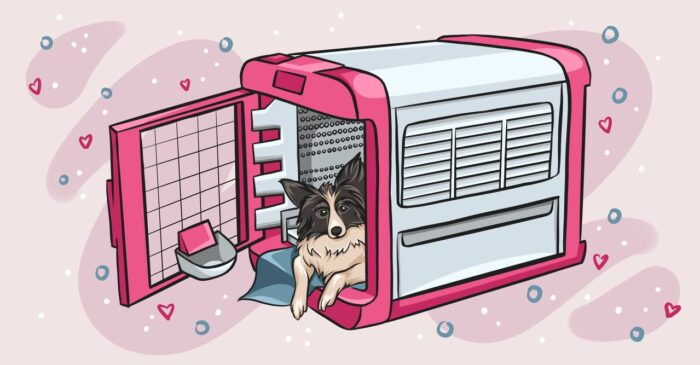
To ensure your pet is comfortable during the trip, you need to choose the right size carrier for him/her. It’s quite easy to choose a carrier for traveling with a pet in the cabin, but with a pet in the luggage or cargo it’s not so simple.
Cabin carrier
1) It must have ventilation on two or three sides and be well ventilated.
2) It should not be transparent. Transparent plastic creates a greenhouse effect, and it is more difficult for your pet to breathe in such a carrier. In addition, in a transparent carrier the pet will have nowhere to hide from prying eyes, which will cause additional stress.
3) It’s best to make sure your carrier is flexible and can be creased to the shape of the calibrator in case it ends up being a little larger than the airline requires.
Carrier for luggage compartment or cargo
A pet carrier traveling in the luggage compartment must comply with IATA standards.
To determine the correct size we need to take the following measurements:
A = length from tip of nose to base of tail
B = length of front legs
C = width of the pet at its widest point
D = the pet’s maximum height while standing on four legs, to the top of the head or the tip of the ear, whichever is higher
E = D + bedding thickness (if any)
We substitute the finished measurements into the formulas below and get the minimum size of a luggage carrier that your pet will be comfortable in.
Carry Length = A + ½ B
Carrying width = C × 2
Carrying height = D + 10 centimeters
Note! If your dog is a brachycephalic breed (for example, a pug, a bulldog, a boxer), then you need to add + 10% to all measurements! These breeds have breathing problems, and for them, the more space the better.
Pet measurement chart for choosing a carrier:


